MMCA Stone Resurrection, 국립현대미술관 돌의 부활, 2022
Invited competition entry for MMCA | National Museum of Modern and Contemporary Art Gwacheon 2022,
MMCA 과천 원형 옥상 정원 재생 프로젝트, 지명 공모 출품작, 2022
돌의 부활
국립현대미술관 돌의 부활
이 프로젝트는 1986년 김태수가 그리고자 했던 돌 이야기에 주목한다. 단순한 기하학적 볼륨과, 국산 화강석으로 우리 강산의 색과 질감을 표현한 미술관의 돌 이야기. 미술관이 지어졌을 당시보다는, 지속 가능성(sustainability)과 돌이라는 소재에 대한 거대한 인식 변화를 맞이한 지금 우리 시대에 오히려 더 큰 울림으로 다가온다.
이 프로젝트는 21세기 디지털 기술을 활용해 그가 그렸던 돌 이야기가 더 온전하게 경험되는 것을 목적으로 한다. 김태수의 원리와 달리 전혀 다르게 변형된 옥상정원 공간을 온전하게 완성하기 위한 지속 가능한 재생 방안을 제안한다. 또한 설치작품이 야기하는 일시적인 폐기물, 쓰레기에 대한 보다 근본적인 물음에 답하고자 한다.
미술관 경험
비워진 원형 옥상정원은 김태수가 과천관을 통해 그리고자 했던 미술관 경험을 완성하는 공간이다. 미술관 전시 동선을 지배하는 나선 램프를 따라가다 보면, 방문객들은 가장 꼭대기의 비워진 원형 옥상정원으로 인도된다. 한 바퀴를 크게 돌면서 펼쳐지는 청계산 풍경을 파노라마로 감상하게 된다. 현재 원형 옥상정원은 600mm x 600mm의 직교하는 대리석 패턴으로 마감되어 있다. 안타깝게도 이는 원형의 기하학에 순응하는 패턴으로 그려진 김태수의 1986년 설계 도면과는 거리가 있다. 또한 강화된 안전 법규에 대응하고자 기존 난간 앞쪽에 덧붙인 스테인리스 난간은 사려 깊게 계획되지 않았고, 우레탄 방수 페인트가 그대로 노출된 트렌치 등의 부조화 요소들이 옥상정원을 산만하게 만들어 공간과 풍경에 집중할 수 없게 한다.
돌의 부활
1986년의 김태수는 상상도 할 수 없었던 돌의 가공과 표현이 21세기 디지털 패브리케이션(digital fabrication) 기술에 의해 가능해졌다. 샌드 블라스팅(sand blasting), 씨엔씨(CNC) 등 기술을 활용해 기존 600mm x 600mm 크기의 대리석과 페데스탈 시스템(pedestal system)을 그대로 유지한 채로 새로운 원형 패턴을 삽입한다. 파라메트릭 디자인 도구(parametric design tool)를 통해 창조된 새로운 원형 패턴을 기존 대리석 위에 3mm 깊이로 각인한다. 1,080여 개의 기존 대리석에 번호를 매긴 후 샌드 블라스팅 공장으로 옮겨 패턴을 각인하고, 다시 옥상정원으로 옮겨 원래 있었던 자리에 위치시킨다. 원형 패턴은 확장되어 트렌치와 새로운 난간으로 이어진다. 하나의 거대한 원형 패턴이 3차원적으로 삽입되어 기존 옥상정원은 김태수의 원리에 따르면서도 완전히 새로운 공간으로 탈바꿈한다.
The National Museum of Modern and Contemporary Art, Gwacheon, designed by architect Taesoo Kim in 1986, tells the story of a symbolic stone. The museum’s story of the stone expresses the color and texture of Korean landscape with the volume of simple geometry and domestic granite, which no one was interested in at the time. It was an unpopular story at the time, but in the 21st century, when there is a huge change in the perception of sustainability and the material of stone, it comes with a bigger resonance.
This project pays attention to the stone story that Taesoo Kim wanted to draw in 1986. It aims to bring to life the story of the stone he drew by using the technology of the 21st century. According to Taesoo Kim's principle, we proposed sustainable regeneration to complete the unfinished roof garden space. In addition, it answers more fundamental questions about waste caused by installation art.
Museum experience
The empty circular roof garden is a space that completes the museum experience that Kim Tae-soo wanted to paint through the Gwacheon Pavilion. Following the spiral ramp that dominates the exhibition movement of the museum, visitors are led to the vacant circular roof garden at the top. You can enjoy the panoramic view of Mt. Cheonggye as you circle around it. The current circular roof garden is finished with a marble pattern of 600mmX600mm orthogonal. Unfortunately, this is far from the 1986 design drawings of Kim Tae-soo drawn in a pattern conforming to the circular geometry. In addition, due to the strengthening of safety regulations, the stainless railing attached to the front of the existing Kim Tae-su’s railing was not thoughtfully planned, and incongruent elements such as a trench exposed to urethane waterproof paint distracted the circular garden, concentrating on the space itself and the landscape. make it impossible
stone resurrection
The processing and expression of stones, which Taesoo Kim could not have imagined in 1986, became possible with the digital fabrication technology of the 21st century. Using technologies such as sand blasting and CNC, the existing 600X600 marble and pedestal system are maintained as they are, and a new circular pattern is inserted. A new circular pattern created through parametric scripting is engraved on the existing 600X600 marble at a depth of 3mm. About 1080 existing marbles are numbered, transferred to a sandblasting factory to engraved patterns, and then moved back to the circular garden and placed in their original place. The circular pattern expands and leads to trenches and new railings. One huge circular pattern is inserted three-dimensionally, and the existing circular garden is transformed into a completely new space while following the principle of Kim Tae-soo.
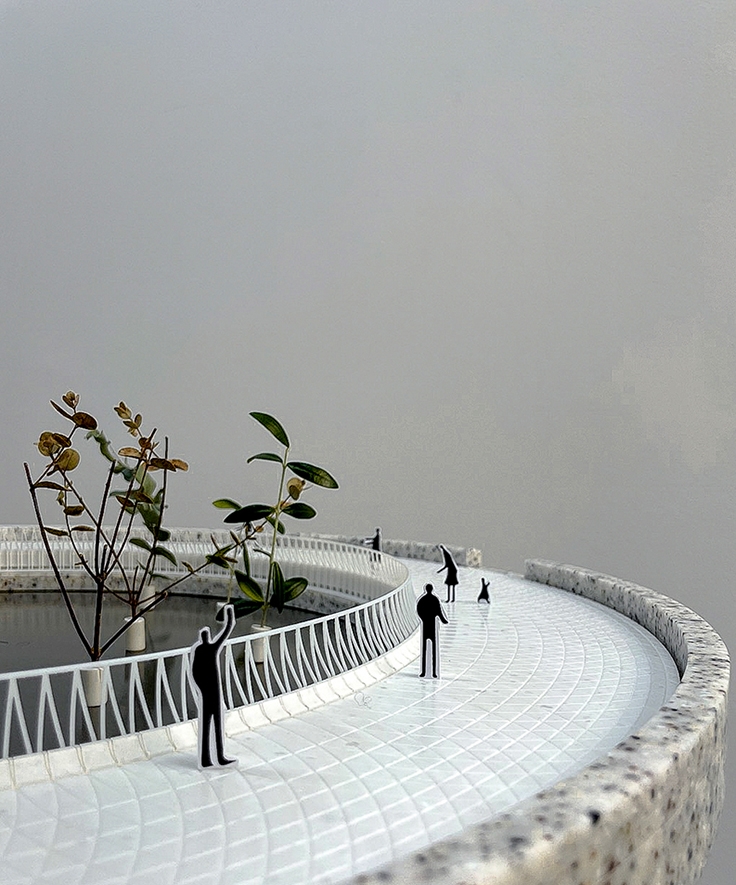 MMCA Stone Resurrection, 국립현대미술관 돌의 부활
MMCA Stone Resurrection, 국립현대미술관 돌의 부활
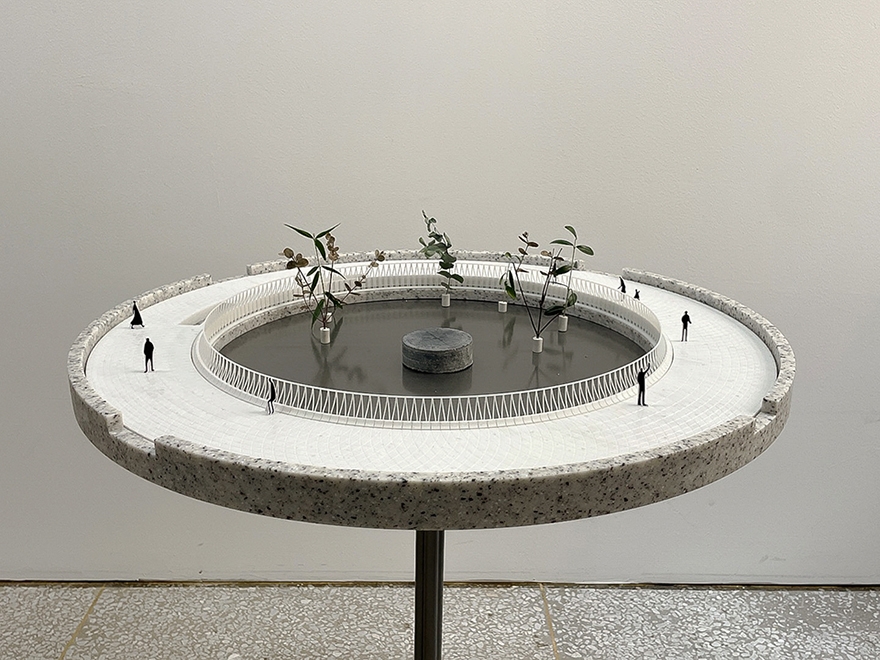 MMCA Stone Resurrection, 국립현대미술관 돌의 부활
MMCA Stone Resurrection, 국립현대미술관 돌의 부활
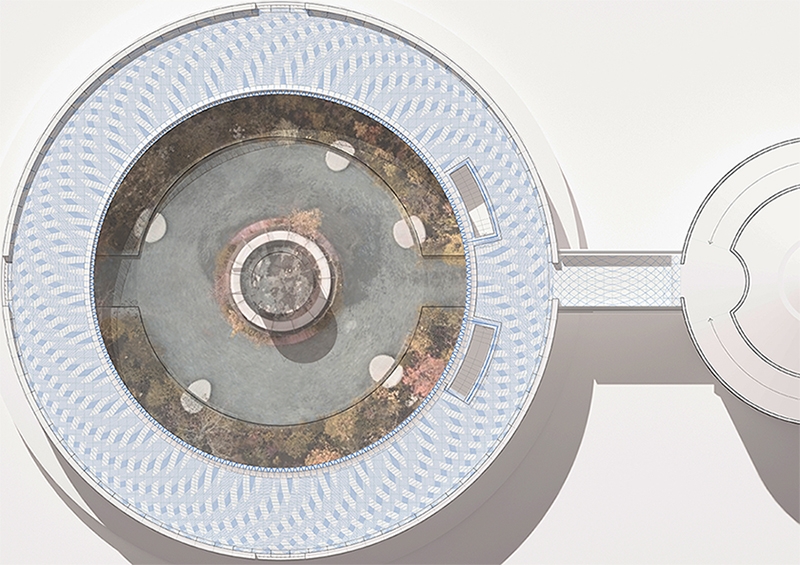 MMCA Stone Resurrection, 국립현대미술관 돌의 부활
MMCA Stone Resurrection, 국립현대미술관 돌의 부활 Plan
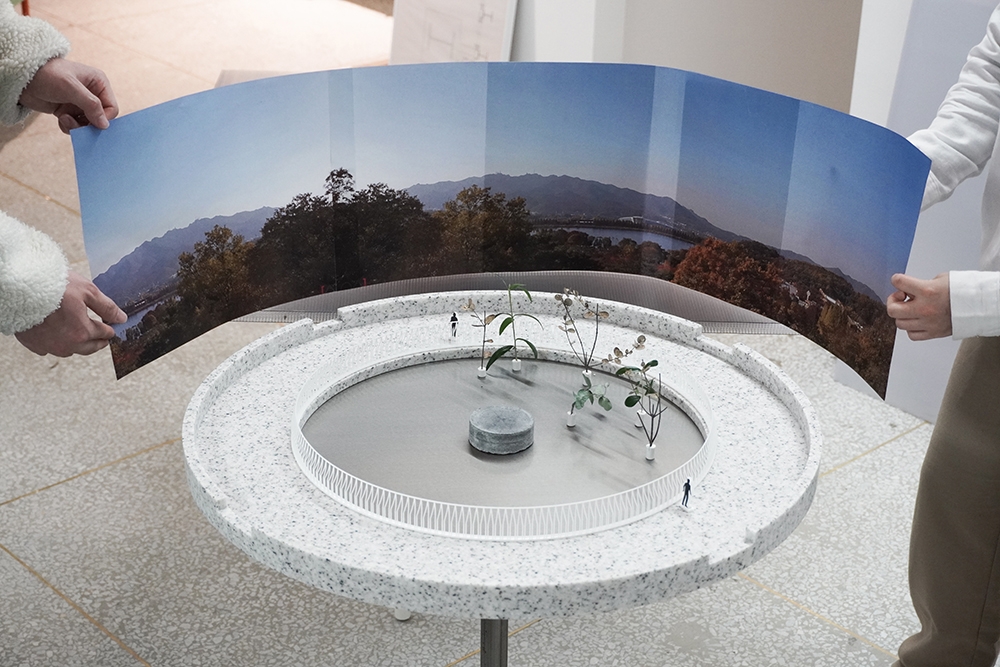 MMCA concept model
MMCA concept model
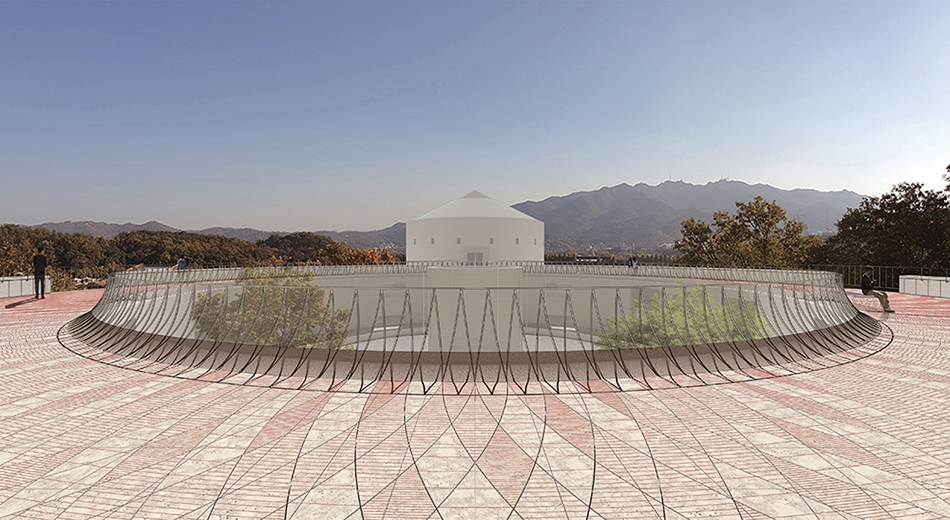 MMCA Stone Resurrection, 국립현대미술관 돌의 부활
MMCA Stone Resurrection, 국립현대미술관 돌의 부활